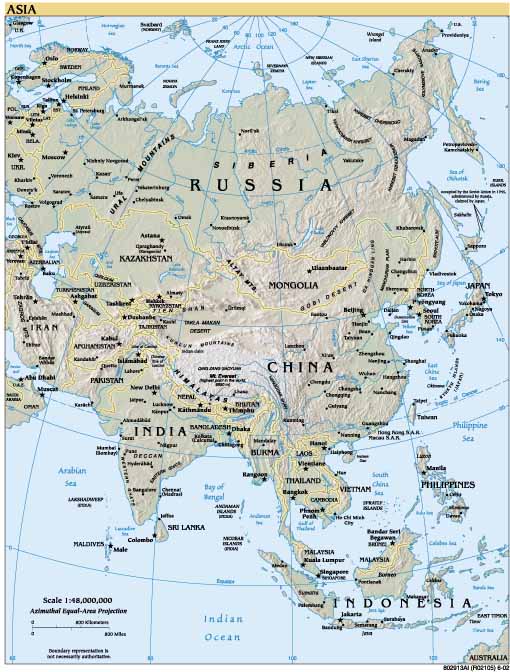| Revision as of 14:04, 21 April 2003 view sourceTakuyaMurata (talk | contribs)Extended confirmed users, IP block exemptions, Pending changes reviewers89,986 edits add a map← Previous edit | Revision as of 06:45, 3 May 2003 view source Menchi (talk | contribs)Administrators30,401 editsm edit disambiguity blockNext edit → | ||
| Line 2: | Line 2: | ||
| ] | ] | ||
| ''This article is about the continent and region, for the sea-nymph named '''Asia''' in Greek mythology, see ].'' | |||
| ---- | ---- | ||
| 1. The ] of <b>Asia</b> is defined by subtracting ] and ] | 1. The ] of <b>Asia</b> is defined by subtracting ] and ] | ||
| from the great land mass of ]. The boundaries are vague: Asia and Africa | from the great land mass of ]. The boundaries are vague: Asia and Africa | ||
Revision as of 06:45, 3 May 2003
This article is about the continent and region, for the sea-nymph named Asia in Greek mythology, see Asia (mythology).
1. The continent of Asia is defined by subtracting Europe and Africa from the great land mass of Africa-Eurasia. The boundaries are vague: Asia and Africa meet somewhere near the Suez Canal. The boundary between Asia and Europe runs via the Dardanelles, the Sea of Marmara, the Hellespont, the Black Sea, the ridges of the Caucasus, the Caspian Sea, the Ural River and the Ural Mountains to Novaya Zemlya. See also Eurasia.
2. The region of Asia is the continent of Asia plus nearby islands.
Subregions of Asia include:
